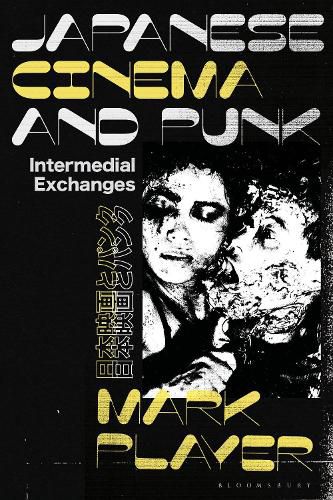Readings Newsletter
Become a Readings Member to make your shopping experience even easier.
Sign in or sign up for free!
You’re not far away from qualifying for FREE standard shipping within Australia
You’ve qualified for FREE standard shipping within Australia
The cart is loading…






In Japanese Cinema and Punk, Mark Player examines how the do-it-yourself ethos of punk empowered a new generation of Japanese filmmakers during a period of crisis and change in Japan's film industry.
Drawing on rare materials and first-hand interviews with key figures from the jishu eiga (self-made film) tradition, including Ishii Gakuryu (formerly Ishii Sogo), Yamamoto Masashi, Tsukamoto Shin'ya, and Fukui Shozin, Player explores how punk's bricolage style was leveraged to create exciting intermedial film aesthetics. These aesthetics were influenced by rock music, graffiti art, street performance, handmade animation, television, and other mass media.
By considering the practical, phenomenological, and political ramifications of combining diverse media elements, Player offers in-depth analyses of films such as Burst City (1982), Robinson's Garden (1987), Tetsuo: The Iron Man (1989), and more. He further traces the changing sociocultural position of Japan's punk generation throughout the 1980s-from its euphoric early-80s peak to the growing disillusionment caused by its mainstream co-optation and convergence.
$9.00 standard shipping within Australia
FREE standard shipping within Australia for orders over $100.00
Express & International shipping calculated at checkout
In Japanese Cinema and Punk, Mark Player examines how the do-it-yourself ethos of punk empowered a new generation of Japanese filmmakers during a period of crisis and change in Japan's film industry.
Drawing on rare materials and first-hand interviews with key figures from the jishu eiga (self-made film) tradition, including Ishii Gakuryu (formerly Ishii Sogo), Yamamoto Masashi, Tsukamoto Shin'ya, and Fukui Shozin, Player explores how punk's bricolage style was leveraged to create exciting intermedial film aesthetics. These aesthetics were influenced by rock music, graffiti art, street performance, handmade animation, television, and other mass media.
By considering the practical, phenomenological, and political ramifications of combining diverse media elements, Player offers in-depth analyses of films such as Burst City (1982), Robinson's Garden (1987), Tetsuo: The Iron Man (1989), and more. He further traces the changing sociocultural position of Japan's punk generation throughout the 1980s-from its euphoric early-80s peak to the growing disillusionment caused by its mainstream co-optation and convergence.